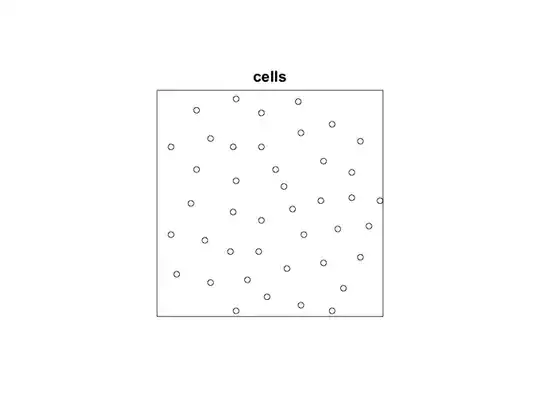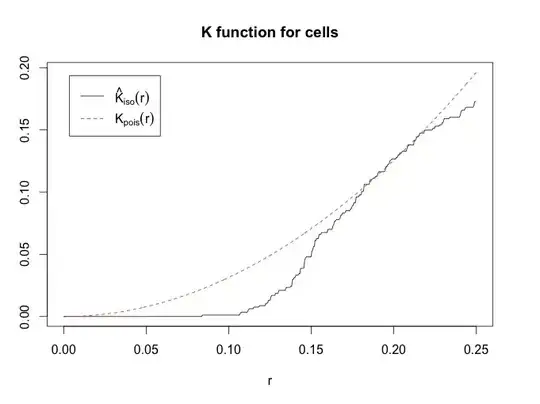The following is a spatial point pattern: 
and these are the corresponding Ripley's K function and L function for this data:


How are these functions interpreted?
The following is a spatial point pattern: 
and these are the corresponding Ripley's K function and L function for this data:


How are these functions interpreted?
If L(observed) < L(expected), the pattern is more regular than expected, if L(observed) > L(expected) the pattern is clustered